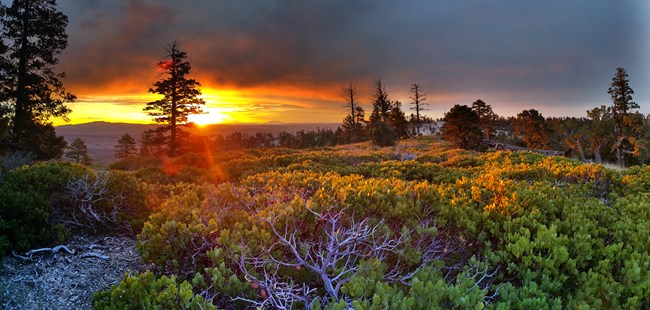
NPS Photo\ Brian B. Roanhorse
Overview
There are many plant communities in Bryce Canyon National Park. Surrounded by deserts, Bryce's highland plateau gets much more rain than the lowlands below and stays cooler during hot summers. The relatively lush ecosystems that result are like fertile islands towering above a vast arid landscape. The park was designated to protect the Pink Cliffs, a series of steep, intricately eroded exposures of the Claron Formation along the eastern escarpment of the Paunsaugunt Plateau.The Bryce Canyon National Park vegetation mapping project delivers many geospatial and vegetation data products, including an in-depth project report discussing methods and results, which include descriptions to vegetation associations, field keys to vegetation associations, map classification, and map-class descriptions. The suite of products also includes a database of vegetation plots, verification sites, validation sites, and accuracy assessment (AA) sites; digital images of field sites; field data sheets; digital aerial imagery; hardcopy and digital maps; a contingency table listing AA results; and a geodatabase of vegetation and land cover (map layer), field sites (vegetation plots, verification sites, validation sites, and AA sites), aerial imagery index, project boundary, and metadata.
Products
The products of vegetation mapping projects are stored and managed in the National Park Service's Data Store, a repository for documents and publications relating to park resources. From the highlighted items below, click on the type of information you are looking for.
Last updated: October 16, 2018
